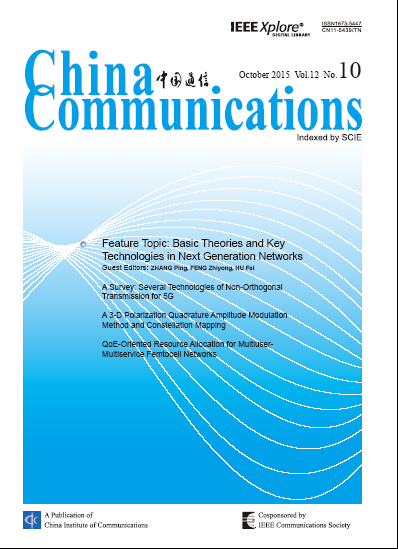CHANNEL CHARACTERIZATION AND MODELING
Pang Lihua, Zhang Yang, Gong Fengkui, Wang Anyi, Xiao Liyuan, Liang Xiao, Wang Qiaofeng, Li Jiandong
2015, 1(10): 52-63.
Comprehensive radiation characteristics of polarized antenna are crucial in creating practical channel coefficients for next generation wireless communication system designs. Being currently supported within 3D geometry-based stochastic channel models (GSCM), field patterns are technically obtained by chamber measurement (or by its best fitting). However, in some channel related performance analysis scenarios, design insight can be crystallized better by starting the derivations with theoretical co-polarization and cross-polarization components. Specifically, these two components are mathematically linked with field patterns through the proposed polarization projection algorithm. In this manuscript, we focus on revealing the transformation criterion of polarization states between the antenna plane and the propagation plane. In practice, it makes retrieving the field patterns by electromagnetic computation possible. Meanwhile, the impact imposed by distinct antenna orientations is geometrically illustrated and consequently incorporated into the proposed algorithm. This will further facilitate flexible performance evaluation of related radio transmission technologies. Our conclusions are verified by the closed-form expression of the dipole field pattern (via an analytical approach) and by chamber measurement results. Moreover, we find that its 2D degenerative case is aligned with the definitions in 3rdgeneration partnership project (3GPP) technical report 25.996. The most obvious benefit of the proposed algorithm is to significantly reduce the cost on generating channel coefficients in GSCM simulation.
